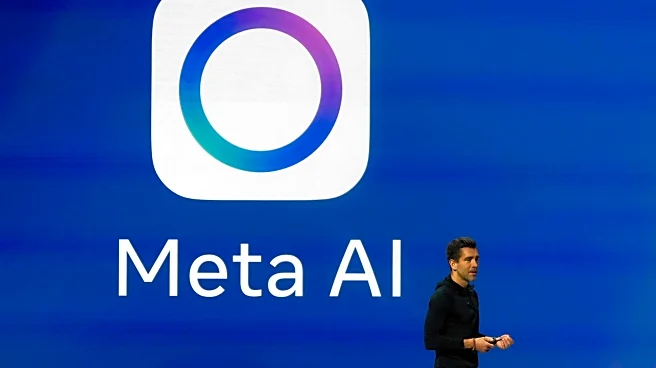What's Happening?
Instagram has announced new safety features for its artificial intelligence chatbots, specifically targeting teenage users. These features are set to be implemented early next year and aim to provide parents
with greater control over their children's interactions with Instagram's A.I. characters. These characters, which possess fictional personalities, can be messaged by users similarly to human accounts. The new controls will allow parents to block certain A.I. characters and receive summaries of their children's conversations. Additionally, Instagram plans to restrict chatbot discussions on sensitive topics such as self-harm, eating disorders, and romance, while promoting age-appropriate subjects like education, sports, and hobbies. The initiative is part of Instagram's response to growing concerns about the impact of A.I. chatbots on young people's mental health.
Why It's Important?
The introduction of these safety features is significant as it addresses the increasing worries about the mental health effects of A.I. chatbots on teenagers. By providing parents with tools to monitor and control their children's interactions, Instagram is taking steps to mitigate potential negative impacts. This move reflects a broader trend in the tech industry to prioritize user safety and mental health, especially among vulnerable groups like teenagers. The restrictions on sensitive topics aim to prevent harmful conversations that could exacerbate mental health issues. As social media platforms continue to integrate A.I. technologies, the need for robust safety measures becomes more critical to protect young users.
What's Next?
Instagram's rollout of these features is expected to begin early next year, with ongoing updates likely as the company assesses their effectiveness. Stakeholders, including parents, educators, and mental health professionals, may closely monitor the impact of these changes on teenage users. The tech industry might see similar initiatives from other platforms as they address the challenges posed by A.I. interactions. Additionally, there could be discussions around the ethical implications of A.I. chatbots and their role in social media, potentially leading to further regulatory scrutiny and policy development.
Beyond the Headlines
The introduction of these safety features raises broader questions about the ethical use of A.I. in social media. As platforms increasingly rely on A.I. to engage users, the balance between innovation and user protection becomes crucial. This development may prompt discussions on the long-term effects of A.I. interactions on social behavior and mental health, influencing future technological advancements and societal norms.













